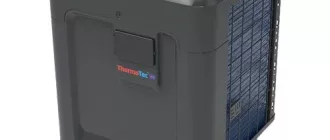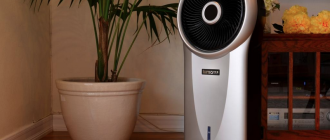Which AC consumes more electricity?
When it comes to staying cool during the hot summer months, many households rely on air conditioning (AC) units. However, not all AC units are created equal in terms of energy consumption.
An AC unit consumes electricity to cool the air and maintain a comfortable indoor temperature. But which type of AC unit uses more electricity? Is it the window AC unit or the central AC system? Let’s explore the differences.
Firstly, window AC units are typically smaller and designed to cool a single room or a small space. These units are installed in a window or a specially designed hole in the wall. On the other hand, central AC systems are larger and are designed to cool an entire house or building. They consist of a main unit that is located outside the building and a network of ducts that distribute the cool air throughout the space.
Both types of AC units can efficiently cool a room or a building, but the energy consumption differs significantly. Central AC systems tend to use more electricity due to their size and the need to cool a larger space. Window AC units, on the other hand, are more energy-efficient since they only need to cool a smaller area.
In conclusion, when it comes to energy consumption, the type of AC unit you choose can make a significant difference. While both window AC units and central AC systems provide the necessary cooling, the latter tends to consume more electricity. Therefore, if energy efficiency is a concern, opting for a window AC unit might be a better choice.
Overview of Energy Consumption in AC Units
In comparing AC units, one of the key factors to consider is the amount of electricity they consume. The AC unit that consumes more electricity will result in higher energy bills and a larger carbon footprint.
AC units primarily consume electricity to power their compressors and fans. The compressor is responsible for cooling the refrigerant, while the fans circulate the conditioned air throughout the room or building. These components require a significant amount of energy to operate.
When comparing AC units, it is important to look at the energy efficiency rating, often referred to as the Seasonal Energy Efficiency Ratio (SEER). AC units with higher SEER ratings typically consume less electricity compared to units with lower ratings.
It is also important to consider the size and cooling capacity of the AC unit. An oversized unit may consume more electricity than necessary, while an undersized unit may struggle to cool a space efficiently. Proper sizing is crucial to ensure optimal energy consumption.
In addition to the AC unit itself, other factors can impact energy consumption. The insulation and sealing of the space being cooled can greatly affect the efficiency of an AC unit. Proper insulation helps prevent cool air from escaping and warm air from entering, reducing the workload on the AC unit.
Regular maintenance and cleaning of AC units are also essential to maximize energy efficiency. Dirty filters, dusty coils, and blocked vents can restrict airflow, requiring the AC unit to work harder and consume more electricity.
Overall, understanding the energy consumption of AC units is crucial when comparing different options. Considering the SEER rating, proper sizing, insulation, and maintenance can help choose an AC unit that consumes less electricity and reduces overall energy costs.
Factors Affecting Energy Consumption
AC Units: When comparing energy consumption, it is important to consider the type and efficiency of the AC unit. Some AC units are designed to consume less energy than others, so choosing the right unit can make a significant difference in energy usage.
Size: The size of the AC unit also plays a role in energy consumption. A larger AC unit may have a higher cooling capacity, but it can also consume more electricity. On the other hand, a smaller AC unit may consume less electricity, but it may struggle to cool a larger space efficiently.
Usage: The way an AC unit is used can also impact energy consumption. Keeping the AC on for extended periods of time, setting the temperature too low, or constantly adjusting the settings can lead to higher energy usage. It is important to use the AC unit efficiently to minimize energy consumption.
Climate: The climate in which the AC unit is operating can also affect its energy consumption. Hotter climates may require the AC unit to work harder and consume more electricity to maintain a comfortable temperature. On the other hand, cooler climates may require less energy to cool the space.
Insulation: The insulation of a building can also impact energy consumption. Poor insulation can result in energy loss and cause the AC unit to consume more electricity to maintain the desired temperature. Proper insulation can help reduce energy consumption and improve overall efficiency.
Maintenance: Regular maintenance of the AC unit is crucial for optimal performance and energy efficiency. Dirty filters, clogged air vents, and other issues can cause the AC unit to consume more electricity. Keeping the AC unit well-maintained can help minimize energy consumption.
In conclusion, several factors can affect the energy consumption of an AC unit. The type and efficiency of the unit, size, usage patterns, climate, insulation, and maintenance all play a role in determining which unit consumes more electricity. Considering these factors can help make an informed decision when comparing energy consumption between AC units.
AC Unit Size and Energy Consumption
One of the key factors that determines the energy consumption of an AC unit is its size. The size of an AC unit refers to its cooling capacity, which is measured in British Thermal Units (BTUs). Generally, larger AC units have a higher cooling capacity and therefore consume more electricity than smaller ones.
AC units that have a higher cooling capacity require more electricity to operate because they need to cool a larger space. On the other hand, smaller AC units with a lower cooling capacity consume less electricity since they are designed to cool smaller areas.
When choosing an AC unit, it is important to consider the size of the space you want to cool. If the AC unit is too small for the room, it may not be able to cool the area effectively and will have to work harder, consuming more electricity in the process. Conversely, if the AC unit is too large for the space, it may cool the room too quickly and turn on and off frequently, resulting in inefficient energy consumption.
In addition to size, other factors such as the efficiency rating of the AC unit, insulation of the room, and temperature settings also affect energy consumption. However, size remains one of the most important factors to consider when comparing the energy consumption of different AC units.
Seasonal Energy Efficiency Ratio (SEER) Ratings
When comparing the energy consumption of different AC units, it is important to consider their Seasonal Energy Efficiency Ratio (SEER) ratings. The SEER rating measures the efficiency of an AC unit and provides valuable information on how much electricity it consumes.
The SEER rating is calculated by dividing the cooling output of an AC unit during a typical cooling season by the total electrical energy input during the same period. The higher the SEER rating, the more efficient the AC unit is and the less electricity it consumes.
AC units with higher SEER ratings are more expensive upfront but can save you money in the long run by significantly reducing your electricity bills. They are also more environmentally friendly as they consume less electricity, resulting in lower greenhouse gas emissions.
When comparing AC units, it is recommended to choose one with a SEER rating that meets or exceeds the minimum efficiency standard set by your local energy regulations. This ensures that you are getting the most energy-efficient unit available and can enjoy savings on your electricity bills.
In conclusion, the SEER rating is an important factor to consider when comparing the energy consumption of AC units. Choosing a unit with a higher SEER rating can lead to significant savings on electricity bills and reduce your environmental impact.
Comparing Energy Efficiency of Different AC Units
When it comes to electricity consumption, it is important to consider which AC unit you choose for your cooling needs. Different AC units have varying energy efficiency, resulting in different levels of electricity consumption. This means that some AC units consume more electricity than others.
Energy efficiency is an important factor to consider when selecting an AC unit. AC units that are more energy efficient can provide the same cooling effect while consuming less electricity. On the other hand, AC units that are less energy efficient may consume more electricity to achieve the desired cooling effect.
The amount of electricity an AC unit consumes is measured in terms of its energy efficiency ratio (EER). The EER represents the ratio of the cooling output (in British thermal units or BTUs) to the energy input (in watt-hours). The higher the EER, the more energy efficient the AC unit is.
When comparing different AC units, it is important to look for the one with a higher EER. This means that the AC unit consumes less electricity for the same cooling output. By choosing an AC unit with a higher EER, you can reduce your electricity consumption and save on energy bills.
Another factor to consider when comparing AC units is the size of the unit. AC units that are too big for the space they need to cool may consume more electricity than necessary. Conversely, AC units that are too small may consume more electricity as they struggle to cool the space. It is important to choose an AC unit that is appropriately sized for the space it will be used in.
In conclusion, choosing an energy-efficient AC unit is paramount to reducing electricity consumption. By selecting an AC unit with a high energy efficiency ratio (EER) and the appropriate size, you can ensure optimal cooling while minimizing energy usage.
Cost of Operation for Different AC Units
When comparing energy consumption, it’s important to consider the cost of operation for different AC units. Understanding which unit consumes more electricity can help homeowners make informed decisions and potentially save on their energy bills.
One way to compare the cost of operation is by looking at the energy efficiency ratio (EER) of each AC unit. The EER measures how much cooling capacity an AC unit provides per unit of electricity consumed. The higher the EER, the more efficient the unit is.
For example, let’s compare two AC units: Unit A and Unit B. Unit A has an EER of 12, while Unit B has an EER of 15. This means that Unit B is more energy efficient and consumes less electricity while providing the same amount of cooling as Unit A.
| Unit A | 12 |
| Unit B | 15 |
To determine the cost of operation, you also need to consider the electricity rate in your area. Multiply the EER by the electricity rate to get the cost per hour of operation for each unit. For example, if the electricity rate is $0.12 per kilowatt-hour:
Cost of operation for Unit A: 12 (EER) * $0.12 (electricity rate) = $1.44 per hour
Cost of operation for Unit B: 15 (EER) * $0.12 (electricity rate) = $1.80 per hour
Based on these calculations, Unit A is more cost-effective to operate as it consumes less electricity per hour compared to Unit B.
It’s important to note that while energy efficient units may have a higher upfront cost, they can result in significant long-term savings on energy bills. Therefore, when choosing an AC unit, it’s recommended to consider both the initial cost and the cost of operation to make an informed decision.
Energy Consumption of Window AC Units
When comparing the energy consumption of window AC units, it is important to consider how much electricity each unit consumes. The efficiency of an AC unit can vary depending on its size and energy rating.
Window AC units are designed to cool a specific area, such as a single room or small space. These units are typically mounted in a window or through a hole in a wall, allowing them to vent hot air outside. The energy consumption of a window AC unit is measured in terms of its cooling capacity, or the amount of heat it can remove from a room in a given amount of time.
AC units with higher cooling capacities generally consume more electricity. This is because they require more energy to cool a larger area. However, newer models of window AC units are designed to be more energy efficient, helping to reduce energy consumption and lower electricity bills.
When comparing window AC units, it is important to look for units that have high energy efficiency ratings. These ratings are typically indicated by the Energy Efficiency Ratio (EER) or Seasonal Energy Efficiency Ratio (SEER). The higher the EER or SEER rating, the more efficient the unit is at cooling a space while consuming less electricity.
Another factor to consider when comparing AC units is the presence of energy-saving features. Some window AC units come equipped with programmable timers, sleep modes, or built-in sensors that can detect when a room is empty or when the desired temperature has been reached. These features can help further reduce energy consumption by automatically adjusting the AC unit’s settings.
In conclusion, the energy consumption of window AC units can vary depending on their cooling capacity, energy efficiency ratings, and additional features. When choosing a window AC unit, it is important to consider these factors in order to select a unit that consumes less electricity and provides efficient cooling for your space.
| Cooling Capacity | Higher capacity consumes more electricity |
| Energy Efficiency Rating | Higher rating indicates lower energy consumption |
| Energy-Saving Features | Features like timers and sensors can reduce energy consumption |
Energy Consumption of Portable AC Units
When it comes to AC units, energy consumption is an important factor to consider. Choosing the right portable AC unit can make a significant difference in your monthly electricity bill. It is crucial to understand which AC unit consumes more energy so that you can make an informed decision.
Portable AC units are a popular choice for many households due to their convenience and flexibility. However, not all portable AC units are created equal when it comes to energy consumption. Some units may consume more electricity than others, leading to higher energy bills.
The energy consumption of portable AC units varies depending on several factors, including the unit’s BTU rating, cooling capacity, and energy efficiency ratio (EER). The BTU rating determines the unit’s cooling power, with higher BTU ratings indicating more cooling capacity. However, higher BTU ratings also mean higher energy consumption.
Another factor to consider is the energy efficiency ratio (EER) of the AC unit. The EER represents the cooling output divided by the power input and is measured in BTU per watt. AC units with higher EER ratings are generally more energy-efficient, as they provide more cooling power for each watt of electricity consumed. Choosing an AC unit with a higher EER rating can help reduce energy consumption.
It is essential to compare the energy consumption of different portable AC units before making a purchase decision. Look for units with lower BTU ratings and higher EER ratings, as they will consume less energy while still providing effective cooling. Additionally, consider the size of the room where the unit will be used. Buying an oversized AC unit for a small room can result in excessive energy consumption.
| Unit A | 10,000 | 10 | 1000 |
| Unit B | 8,000 | 12 | 667 |
For example, let’s compare Unit A with a BTU rating of 10,000 and an EER of 10, and Unit B with a BTU rating of 8,000 and an EER of 12. Although Unit A has a higher BTU rating, Unit B consumes less energy due to its higher EER rating. When making a decision, it is crucial to consider both the BTU rating and the EER to determine which AC unit will use more electricity.
In conclusion, when comparing energy consumption in portable AC units, it is important to consider both the BTU rating and the EER. Look for units with lower BTU ratings and higher EER ratings to ensure energy efficiency. By choosing the right AC unit, you can enjoy a cool and comfortable environment while minimizing your energy consumption and lowering your electricity bills.
Energy Consumption of Central AC Units
Central AC units are a common choice for cooling homes and buildings. These units are connected to a central system that distributes cool air throughout the space. However, it is important to consider the energy consumption of these units before making a decision.
An AC unit consumes electricity to cool the air. The amount of electricity consumed depends on various factors, including the size of the unit, the efficiency of the system, and the temperature settings. It is crucial to choose an AC unit that balances energy consumption and cooling efficiency.
When comparing central AC units, it is essential to consider their energy efficiency ratings. Energy efficiency is measured by the Seasonal Energy Efficiency Ratio (SEER). A higher SEER rating indicates a more energy-efficient unit, meaning it consumes less electricity to produce the desired cooling effect.
Additionally, the size of the AC unit plays a significant role in energy consumption. An oversized unit may consume more electricity than necessary because it cools the space quickly but turns on and off frequently, leading to energy wastage. On the other hand, an undersized unit may struggle to cool the space efficiently, leading to increased energy consumption.
Another factor to consider is the temperature settings. Setting the AC unit at lower temperatures requires more energy to maintain, leading to higher electricity consumption. Optimal temperature settings should strike a balance between comfort and energy efficiency.
In conclusion, when comparing central AC units, it is crucial to consider their energy consumption. This can be determined by factors such as energy efficiency ratings, unit size, and temperature settings. Choosing an energy-efficient AC unit that consumes less electricity can result in cost savings and a more sustainable cooling solution.
Comparison of Energy Consumption in Different Room Sizes
When it comes to energy consumption, it is important to consider the size of the room in which the AC unit is being used. Different room sizes require different levels of cooling power, which can impact the amount of electricity consumed by the AC unit.
Generally, larger rooms require more cooling power and therefore tend to use more electricity. This is because a larger space requires the AC unit to work harder to cool the room down to the desired temperature. On the other hand, smaller rooms require less cooling power and consequently use less electricity.
It is worth noting that the specific design and efficiency of the AC unit also play a role in energy consumption. Some AC units are designed to be more energy-efficient, which can help reduce electricity usage even in larger rooms. These units often have features such as programmable thermostats and energy-saving modes.
When comparing energy consumption in different room sizes, it is important to consider both the size of the room and the efficiency of the AC unit being used. This can help determine which AC unit will use more or less electricity in a given room size.
In conclusion, the size of the room and the efficiency of the AC unit are key factors in determining energy consumption. While larger rooms typically require more cooling power and therefore use more electricity, the efficiency of the AC unit can help minimize energy usage. When considering which AC unit to use in a specific room size, it is essential to evaluate these factors to make an informed decision.
The Impact of Temperature Settings on Energy Consumption
When comparing energy consumption between different AC units, one important factor to consider is the temperature settings. The temperature at which you set your AC unit can have a significant impact on the amount of electricity it uses.
Which temperature setting uses more electricity? The answer to this question depends on a few different factors. Generally, setting your AC unit to a lower temperature will result in higher energy consumption.
- When the AC unit is set to a lower temperature, it has to work harder to cool the air to that level. This increased workload requires more electricity and results in higher energy consumption.
- On the other hand, when the AC unit is set to a higher temperature, it doesn’t have to work as hard to cool the air to that level. This requires less electricity and results in lower energy consumption.
- Additionally, factors such as the insulation of the room, the size of the space being cooled, and the outdoor temperature can also affect the energy consumption of an AC unit at different temperature settings.
Therefore, it is important to find a balance between comfort and energy efficiency when setting the temperature on your AC unit. By setting the temperature a few degrees higher, you can reduce energy usage and save money on your electricity bills.
Overall, the impact of temperature settings on energy consumption is significant. It is important to choose a temperature setting that is comfortable for you while also considering the energy efficiency of your AC unit.
Energy-Saving Tips for AC Users
When it comes to using an AC unit, there are several energy-saving tips that can help reduce the amount of electricity consumed. By following these tips, you can not only save money on your energy bills, but also contribute to a greener environment.
| Set the temperature wisely | Set your AC temperature to a comfortable level, but avoid setting it too low. Each degree you raise the temperature can help save a significant amount of electricity. |
| Use a programmable thermostat | Invest in a programmable thermostat that can automatically adjust the temperature based on your preferences. This way, you can save energy by reducing cooling when you’re not at home. |
| Keep windows and doors closed | Ensure that all windows and doors are properly sealed to prevent cool air from escaping and warm air from entering. This will help your AC unit work more efficiently and consume less electricity. |
| Use ceiling fans | Turn on ceiling fans to circulate cool air throughout the room. This will allow you to set the AC at a higher temperature while still maintaining a comfortable environment. |
| Keep vents unobstructed | Make sure that furniture or other objects are not blocking HVAC vents. This will allow for proper airflow and help your AC unit work more efficiently. |
| Maintain your AC unit | Regularly clean or replace air filters and schedule routine maintenance for your AC unit. A well-maintained unit will operate more efficiently and consume less electricity. |
| Consider energy-efficient models | If you’re in the market for a new AC unit, consider purchasing an energy-efficient model. These units are designed to consume less electricity while still providing effective cooling. |
By implementing these energy-saving tips, you can reduce the amount of electricity your AC unit consumes. Not only will this help lower your energy bills, but it will also contribute to a more sustainable future.
Financial and Environmental Implications of Energy Consumption
When it comes to energy consumption, the use of AC units plays a significant role. AC units rely on electricity to function, and this usage leads to financial and environmental implications that are worth considering.
Firstly, AC units consume electricity, and on a larger scale, this can result in higher electricity bills. AC units that use more electricity, such as those that are not energy-efficient, can significantly impact household expenses. Choosing an AC unit that consumes less electricity can help save money in the long run.
Moreover, the environmental implications of energy consumption by AC units are substantial. The generation of electricity often relies on non-renewable energy sources such as fossil fuels, which contribute to greenhouse gas emissions and air pollution. The more electricity an AC unit uses, the greater its contribution to these environmental issues. Therefore, selecting an energy-efficient AC unit with lower electricity consumption can help reduce the overall environmental impact.
To illustrate the financial and environmental implications of energy consumption, let’s compare two AC units: Unit A and Unit B. Unit A consumes less electricity compared to Unit B, resulting in lower electricity bills for households. Additionally, since Unit A uses less electricity, it also has a smaller environmental footprint, leading to reduced greenhouse gas emissions and air pollution.
| Unit A | Less | Lower electricity bills | Reduced greenhouse gas emissions and air pollution |
| Unit B | More | Higher electricity bills | Increased greenhouse gas emissions and air pollution |
In conclusion, the financial and environmental implications of energy consumption by AC units are significant. Choosing an AC unit that uses less electricity can help save money on electricity bills and reduce the overall environmental impact. It is crucial to consider these implications when selecting an AC unit to make a more informed and responsible choice.
Q&A:
What factors affect the energy consumption of an AC unit?
The energy consumption of an AC unit can be affected by several factors, including the size and type of the unit, the temperature setting, the insulation of the building, and how often the unit is used.
Which type of AC unit is more energy-efficient?
Generally, split-system AC units are more energy-efficient than window units. Split-system units have two main parts: an indoor unit and an outdoor condenser unit, which allows for more precise cooling and better energy efficiency. Window units, on the other hand, can be less efficient due to air leakage and heat transfer.
How can I reduce the energy consumption of my AC unit?
There are several ways to reduce the energy consumption of your AC unit. You can set the temperature a few degrees higher, use a programmable thermostat to adjust the temperature when you’re not home, regularly clean and maintain your unit, ensure proper insulation in your home, and use ceiling fans to help circulate the cool air.
What is the impact of energy-efficient AC units on electricity bills?
Energy-efficient AC units can help lower electricity bills. Although they may be initially more expensive to purchase, they consume less electricity to cool your home, resulting in lower energy costs over time. This can lead to significant savings on your monthly electricity bills.






